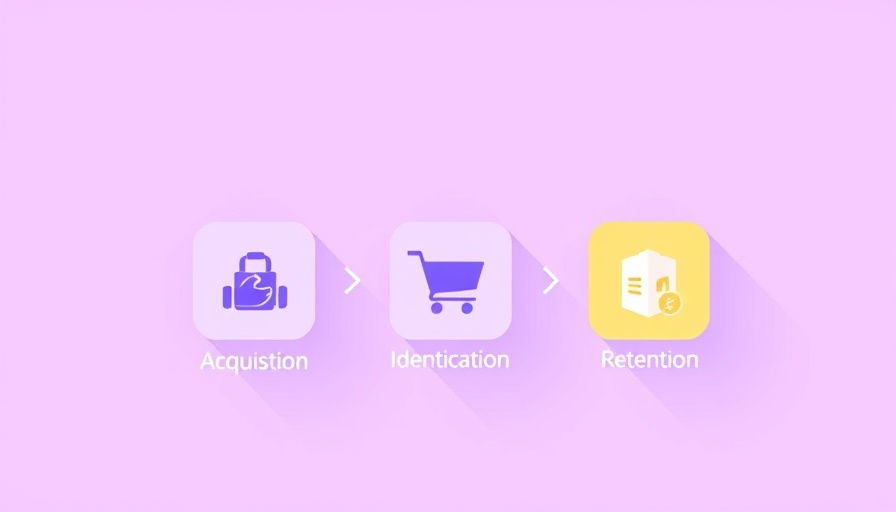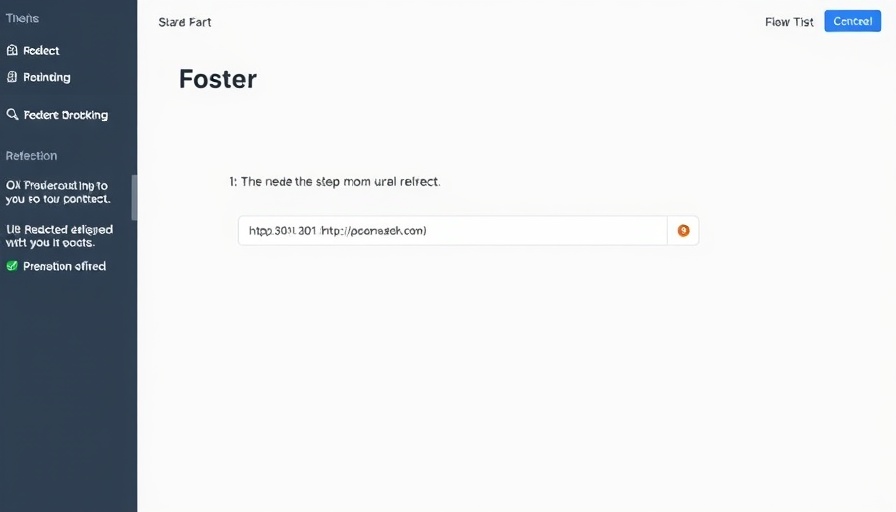
Understanding the Three-Stage Framework for Ecommerce Conversion
In the fast-paced world of digital marketing, converting potential customers into loyal buyers presents a significant challenge, particularly as more e-commerce traffic stems from anonymous visitors. A prominent statistic shows that 63% of digital marketing leaders are struggling to deliver personalized experiences, with only 17% leveraging the power of artificial intelligence (AI) and machine learning (ML) in their endeavors. This raises critical questions: how can businesses bridge the gap between aspiration and execution? This is where a robust three-stage framework becomes essential.
Stage 1: Strategic Segmentation for Successful Acquisition
The initial challenge for e-commerce businesses revolves around managing the vast amounts of anonymous visitors, which constitutes around 90-98% of traffic. Traditional personalization tactics, tailored for known customers, falter here. Enter strategic segmentation. By shifting focus from generic customer personas to behaviorally defined segments, businesses gain insights grounded in actual shopping habits.
For instance, using smart URLs to tag incoming traffic ensures that visitors encounter tailored product recommendations immediately, enhancing their shopping experience. This approach not only feels relevant to the user but significantly boosts conversion rates as it directly corresponds to their browsing behavior. Key metrics to monitor here include segment-specific conversion rates and new visitor engagement.
Stage 2: Progressive Identification to Foster Relationships
The second stage emphasizes the importance of turning interested, unidentified visitors into known customers. Instead of imposing registration barriers, companies can initiate valuable exchanges to encourage information sharing. Take a beauty retailer offering a skincare quiz as an example: visitors input their skin concerns and receive personalized product recommendations. This strategy goes beyond mere newsletter signups; it becomes a significant piece of content that enhances user experience while capturing leads.
This method creates a bridge from anonymous browsing to a known relationship, fostering customer loyalty and engagement. Hence, collecting data while providing genuine value can drastically improve a business's identification rate.
Stage 3: Retention through Exceptional Experiences
The third pillar in this framework focuses on retention, which is crucial for sustained growth. At this stage, fostering a strong, loyal customer base becomes the goal. Here, businesses are encouraged to create personalized experiences based on the information they've gathered in the previous stages. Techniques such as tailored email marketing campaigns, loyalty programs, and exclusive offers can invigorate customer relationships.
Additionally, if a business can maintain communication with personalized follow-ups or feedback requests, it builds a community feel rather than a mere transactional relationship, significantly enhancing customer retention values.
Future Trends in Ecommerce Personalization
As technology continues to advance, so too will the methods by which e-commerce businesses can engage with their audiences through personalization. Expect to see increased reliance on AI-driven strategies that analyze vast datasets to predict future buying behaviors accurately.
Moreover, as consumer privacy concerns rise, brands will have to exercise caution in how they gather and use data, balancing personalization with respect for users' privacy. Implementing ethical data practices while harnessing AI's potential will be a defining factor in successful future e-commerce strategies.
Final Thoughts: Adapting to Consumer Needs
Personalization in e-commerce is no longer optional; it is a necessity. The three-stage framework offers a clear roadmap for businesses ready to enhance their customer acquisition strategies effectively. Understanding how to strategically segment visitors, progressively identify potential customers, and create remarkable retention experiences ensures that businesses stay ahead in the competitive landscape.
For business owners eager to fuel growth, adopting this framework can yield substantial dividends in conversion and customer loyalty. In a world where more than half of potential e-commerce shoppers may remain unidentified, it is essential to adapt and innovate continually.
 Add Row
Add Row  Add
Add 






Write A Comment